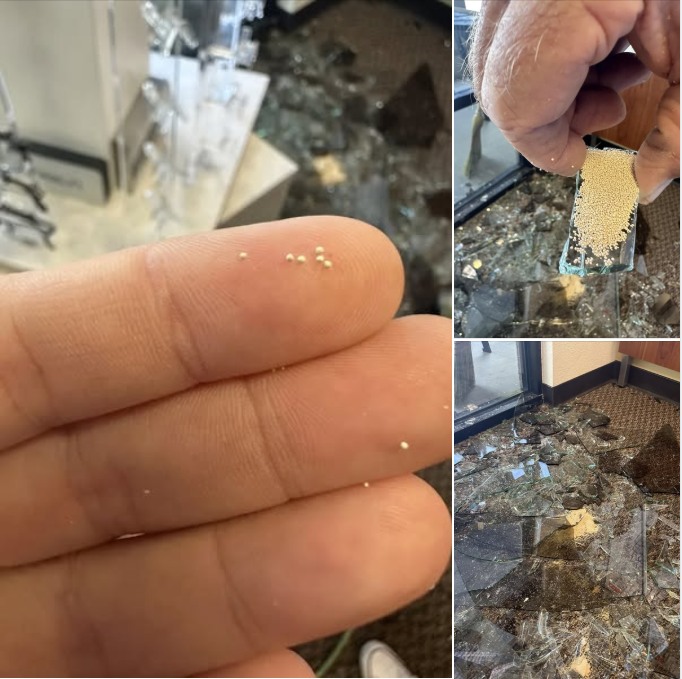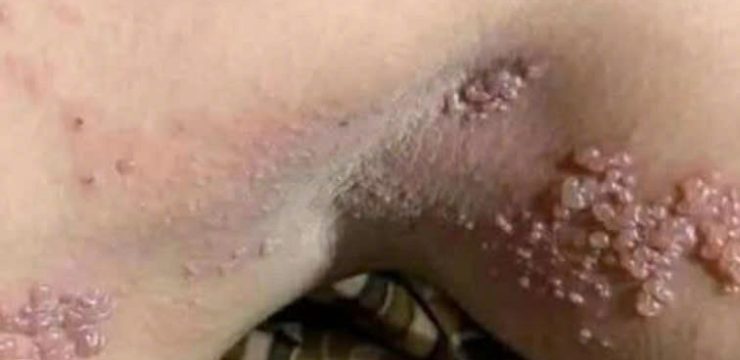After my wife’s office was broken into, we expected to find shattered glass, a mess of paperwork, and some stolen electronics. What we didn’t expect were dozens of tiny, cream-colored beads scattered all over the floor. At first glance, they looked like dry grains—maybe millet or couscous—and it threw us off completely.

We even asked the police if they knew what the beads were, but they were just as puzzled. Since we had no clue what we were dealing with, we decided to hand them over to the authorities for safety reasons. Later, though, we finally got an explanation—and it turned out to be far less mysterious than we imagined. The tiny beads weren’t planted by the burglars, nor were they some hidden clue. They actually came from the broken window itself. That’s right—the glass that had been smashed during the break-in contained these small beads as part of its structure. We had no idea, but modern double-pane windows, often called insulated glass units (or IGUs), are more than just two panes of glass glued together.
They have a metal spacer running between the panes to maintain the right amount of separation and seal in the insulating air or gas. Inside that metal spacer? That’s where these little desiccant beads live. These beads serve an important purpose—they absorb moisture that might sneak into the sealed air gap between the panes. Without them, over time, humidity could build up and cause fogging or condensation inside the window, making it cloudy and less effective as an insulator. The desiccant keeps things dry and clear by capturing any stray moisture that manages to seep in through tiny leaks or imperfections.
When the burglars shattered the glass, their impact didn’t just break the outer pane—it also busted open the spacer inside the window, spilling the desiccant beads everywhere. That’s why they were stuck to the shards and sprinkled across the carpet like a bunch of mystery seeds. As for the materials used in these desiccant beads, they’re typically non-toxic substances such as silica gel, zeolite, or molecular sieves—all well-known for their ability to soak up moisture. While they aren’t dangerous on their own, it’s still smart to clean them up quickly if you spot them. Small children or pets could mistake them for something edible, and while not poisonous, they definitely weren’t meant for snacking.
It was a strange experience, standing there thinking we’d discovered some bizarre evidence left behind by the burglars, only to learn it was actually just a part of standard window construction. It’s funny how something so normal can seem out of place in the chaos of a break-in. The beads felt like a clue, but they weren’t. No secret message. No odd calling card from the intruders. Just a structural component of a modern window doing exactly what it was designed to do—right up until someone smashed it to pieces. So, if you ever walk into a scene with broken glass and find tiny, cream-colored beads scattered around, don’t panic. You’re probably not dealing with some high-tech spy gadget or an unsolvable mystery. You’re just looking at the inner workings of a dual-pane window that got broken in the process. That’s your answer: those little balls are desiccant beads, placed there by window manufacturers to keep moisture out and clarity in. Just sweep them up and move on. And, just a side note, if you’re in Central California and come across someone selling Ray-Bans or Costa sunglasses that seem a little too good to be true—well, maybe give us a call. You might have stumbled onto our missing inventory. All in all, this whole situation was a reminder that not everything strange is suspicious. Sometimes, the odd little things we find after a disaster have perfectly reasonable explanations rooted in everyday construction. It’s a small, strange detail, sure—but it’s not a mystery anymore.





